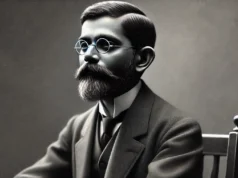
New wine is put into fresh wineskins
Matthew 9.9-34
Two of the most intriguing things about Jesus’ calling of his disciples are his apparent casualness and abruptness. As with the calling of the first disciples (4.18-22), the impression given here is of Jesus seeing someone for the first time as he happens to pass by and randomly calling him to follow.
Matthew, like the fishermen, responds immediately, leaving everything. It is in fact unlikely that the disciples knew nothing of Jesus prior to their call; nevertheless both the immediacy of their response and their radical departure from their former life is significant. It stands in stark contrast with the would-be disciples in 8.18-23.
To the casualness and abruptness of Matthew’s call must be added the unlikeliness of it. Matthew, as a tax collector, would have been regarded as amongst the worst of sinners. Caravaggio is doubtless correct when he depicts Matthew (3rd from left) as surprised and questioning whether Jesus really means him. Jesus makes it clear, however, that this is consistent with the purpose of his mission – which is to redeem sinners.
What the Pharisees don’t get is that sinners are not a threat to Jesus’ righteousness. In their understanding the way to righteousness is to cut oneself off from anything that might defile, and to offer expiatory sacrifices for anything that does. What Jesus teaches is that neither approach pleases God (13). It simply produces self-righteousness.
The way to righteousness is to repent and turn to the one who has the power to forgive sin (9.6). Jesus in his mercy seeks out those who are willing to do this, those who know they are sinners who need redeeming.
John’s disciples question why Jesus and his disciples do not fast. Jesus’ response again highlights his own role: he is the bridegroom, therefore feasting, not fasting should accompany his arrival. He likens his message of forgiveness to new wine, which speaks of joy and life.
The old wineskin, which is the old religious framework of the temple cult with its priests and its sacrificial system, laws of washing and cleanliness, has been superseded. It cannot contain the new wine – as the responses of the scribes, Pharisees and Sadducees prove. Nowhere is this more marked than at the end of this section (34).
The four healings which follow serve to illustrate the joy which the bridegroom brings as he imparts healing (22), new life (25), sight (29) and release from demonic oppression (33). As previously, humility and faith play a significant role, and Jesus shows concern not just for physical healing but for emotional healing too (22). Arguably though, the greatest healing is Matthew’s.
To ponder
Who (in your context) are the sick who need a doctor?
To pray
Gracious Father, I thank you that no one who acknowledges their sin is beyond the reach of your love and mercy. I pray that you might lead me to the house of those who are most needy, and whose lives you long to transform, for I ask it in Jesus’ name. Amen
Michael Hewat is currently serving as the Senior Minister at West Hamilton Community Church, New Zealand
Photo by Francesco Gallarotti on Unsplash









